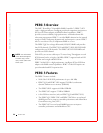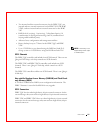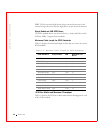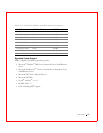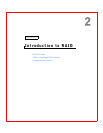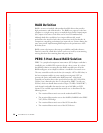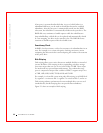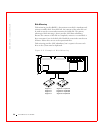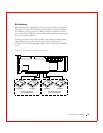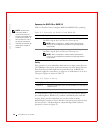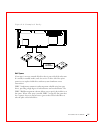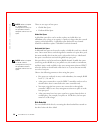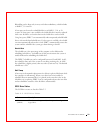
32 Introduction to RAID
www.dell.com | support.dell.com
A hot spare is an unused online disk that, in case of a disk failure in a
redundant RAID array, can be used to rebuild the data and re-establish
redundancy. After the hot spare is automatically moved into the RAID
subsystem, the failed drive is automatically rebuilt on the spare drive. The
RAID disk array continues to handle requests while the rebuild occurs.
Auto-rebuild allows a failed drive to be replaced and automatically rebuilt
by “hot-swapping” the drive in the same drive bay. The RAID disk array
continues to handle requests while the rebuild occurs.
Consistency Check
In RAID, check consistency verifies the correctness of redundant data in an
array. For example, in a system with parity, checking consistency means
computing the data on one drive and comparing the results to the contents
of the parity drive.
Disk Striping
Disk striping allows you to write data across multiple disk drives instead of
just one disk drive. Disk striping involves partitioning each drive storage
space into stripes that can vary in size from 2 KB to 128 KB. These stripes
are interleaved in a repeated sequential manner. The combined storage
space is composed of stripes from each drive. PERC 3 supports stripe sizes
of 2 KB, 4 KB, 8 KB, 16 KB, 32 KB, 64 KB, and 128 KB.
For example, in a four-disk system using only disk striping (as in RAID level
0), segment 1 is written to disk 1, segment 2 is written to disk 2, and so on.
Disk striping enhances performance because multiple drives are accessed
simultaneously, but disk striping does not provide data redundancy.
Figure 2-1 shows an example of disk striping.



